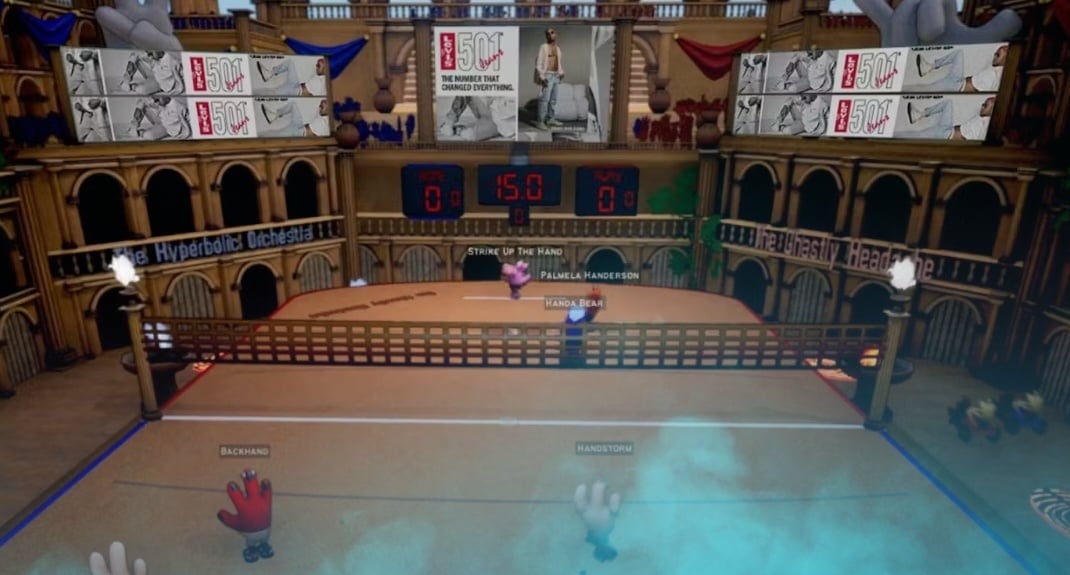- Newsroom
- >
- In-game advertising: 7 tips to get the most out of your investment

In-game advertising: 7 tips to get the most out of your investment
Gaming is now the fastest-growing advertising channel. In-game advertising has quickly become the go-to way to reach the incredibly diverse and engaged global gaming community of over 3.2 billion gamers.
Brands from every vertical imaginable are now looking to in-game to supercharge their latest ad campaigns, but what do you need to know to get the most out of your investment?
Whether you have been working with in-game for some time or are thinking about launching your first foray into the wonderful world of gaming, here are Anzu’s top tips to help you get the most out of your next in-game ad campaign.
Getting creative
David Cage, founder of the award-winning game development studio Quantic Dream once said, “I approach video games the same way I approach theatre, filmmaking, poetry, or painting. I wish more people would take that point of view.”
Games are 3D masterpieces, often built over years with dedicated teams of creatives and developers who are extremely passionate about their creations. This is important, especially when considering the types of creatives you want to bring in-game. Gaming is a fast-paced environment, so it’s essential to strike the right balance between an ad that complements the gameplay but stands out enough for players to remember it.
Don’t: use busy creatives with lots of details, low contrast, small text, and call-to-actions (CTAs).
Do: create simple creatives with big clear logos, limited text, and no CTAs.
It’s all about timing
Let’s face the facts. Players will not slow their car down during a race, pause as they walk down the street, or drop the ball to take a few minutes to watch your ad. In-game video ads need to be short and snappy, something that can catch the player’s attention enough to help them remember your brand.
The recommended six seconds gives the player enough time to view the ad and take the core message on board without distracting the player from their mission or goal. However, it’s important to experiment to see what works for your brand. Remember that most video game environments are unsuitable for long passive video viewing.
Don’t: serve video creatives over 30 seconds long.
Do: use short 6-15 second videos to get you the highest value cost ratio (VCR) and brand lift.
The power of storytelling
Gaming environments differ from 2D linear experiences, so you need to understand how players move and navigate around them. As players move around the game, they will often see your ad from different angles. Keeping your brand prominent and on-screen throughout your video ads will help to ensure the player has the opportunity to see it multiple times.
Long-form stories of multiple scenes with a building narrative and a brand reveal at the end don’t tend to perform well in fast-paced gaming environments. Short, snappy, and to the point with your logo/product/service on screen as much as possible is key to building brand awareness.
Don’t: follow traditional storylines where it builds, and the brand is revealed at the end.
Do: get your brand in early and appear throughout.
Treating gaming as out-of-home (OOH)
In-game advertising is designed to complement and enhance the gameplay, and it’s all about brand building through immersive ads that catch the player’s attention. Taking the player away from the game can disrupt the experience and often means the player is unlikely to return straight away.
It can help to think about in-game ads like OOH. They can be used to build brand awareness and purchase intent, catching attention as opposed to ads on other digital channels whose success is often based on performance metrics like clicks and installs.
Don’t: expect clicks/installs.
Do: measure brand lift and purchase intent for brand awareness campaigns.
The power of cross-platform play
There is also a growing trend of gamers playing across multiple platforms depending on where they find themselves. This was confirmed by research we carried out on gamers earlier this year.
For this reason, it’s essential that you work with an in-game advertising partner that understands the gaming landscape and can help you target the right audience for your campaign. You should ensure the provider you use can serve in-game ads across multiple platforms, including mobile, PC and console titles. Otherwise, you could be losing out on a huge chunk of your target audience.
Don’t: target users on just one device.
Do: go cross-platform.
Viewability is key
The industry has worked with ads in 2D environments for a long time, so naturally, all the standards and parameters in place have been built for these environments. To help advertisers measure viewability in gaming environments, Anzu built a patented 3D ad tracker. Its data is also audited by Oracle and IAS, meaning brands can be sure that their impressions are viewable.
The industry is working hard to standardize in-game viewability, which is why the MRC is working on new guidelines to ensure viewability is counted in the right way. On top of this, it’s also important that advertisers measure how much attention their ad placements receive, as this will help them to understand how effective their campaign has been at reaching players.
Don’t: buy non-viewable impressions.
Do: make sure all the in-game supply you buy is viewable.
Fighting fraudsters
Invalid traffic (IVT) in-game is very low — according to Human, Anzu’s IVT currently averages 0.35% as it’s difficult for fraudsters to mirror a gamer. However, as the dollars continue to flow, the fraudsters will inevitably follow. It’s important to work with providers who can supply you with IVT rates and who work with trusted third-party verification providers like Oracle, IAS and Human.
Don’t: buy traffic that hasn’t been scanned using traffic quality controls.
Do: make sure your in-game traffic is scanned for fraud.
As an emerging medium, in-game advertising has its challenges, and some parameters are still to be defined. However, this is quickly changing, and the upcoming MRC standards will bring even more confidence to advertisers keen to invest in the space. As we have seen, it is extremely important to understand the format, the environment, and what success metrics can be delivered for your campaigns. Advertisers should ensure they work with a trusted partner to help them activate their in-game campaigns.
Originally published on The Drum.
Get in touch with our team

Natalia Vasilyeva has been in the AdTech industry since 2013 and is currently EVP of Marketing and Strategy at Anzu. She leads the global marketing and strategy teams and continues to shape Anzu’s strategy, proposition, and roadmap, having helped transition the company from start-up to scale-up to its current status as the in-game advertising leader. Connect with her on LinkedIn.